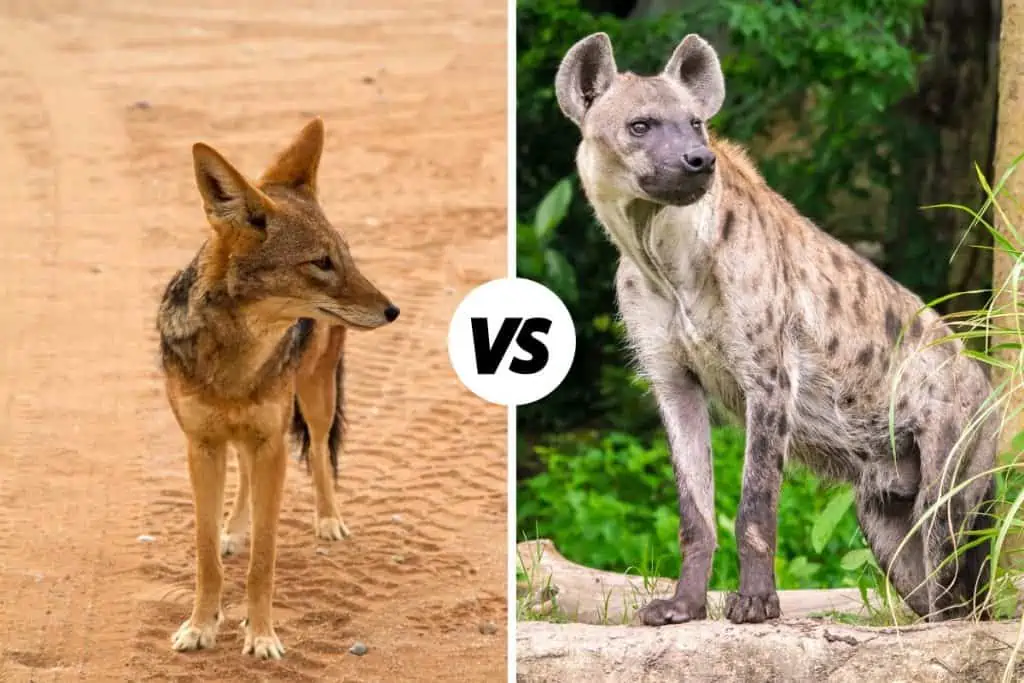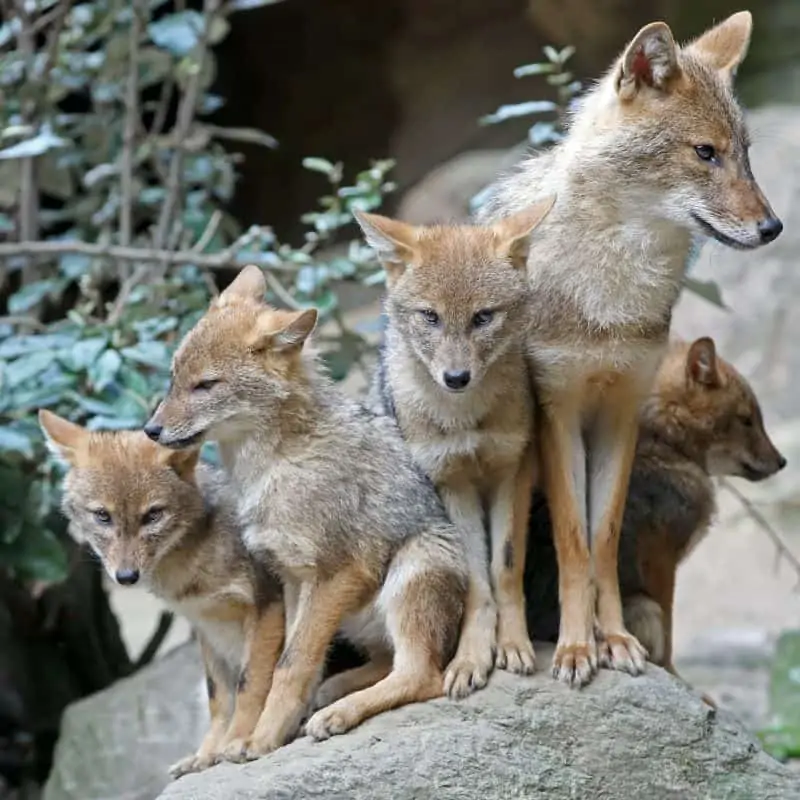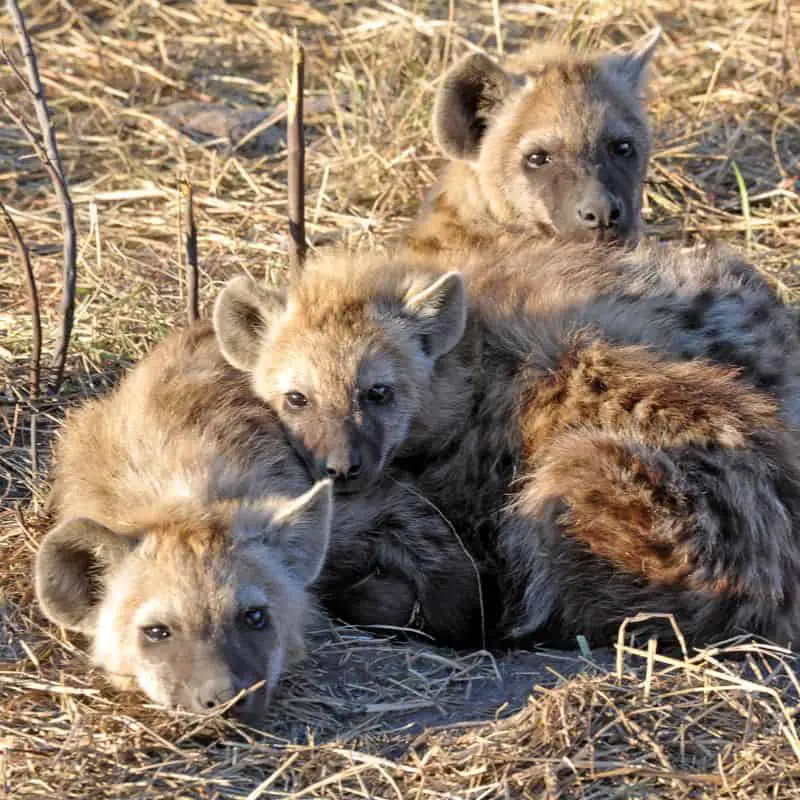Jackals and hyenas are two of the most notorious predators in the animal kingdom. They both belong to the family of carnivorous mammals but have many differences that make them easily distinguishable. Despite their similarities, what makes jackals and hyenas different from one another?
Jackals and hyenas share similar habitats but are very different. Jackals are small and hunt alone or in pairs, while hyenas are larger and live in clans. The former has a slender build with shorter legs, while the latter has a bulkier build. Jackals feed on smaller mammals, birds, and insects, while hyenas scavenge or prey on larger animals. Jackals are timid compared to bold and aggressive hyenas.
In this article, we’ll discuss the differences between jackals and hyenas. We’ll look at their physical characteristics, diet, habitat, behavior, social structure, and more. Let’s get started.

Main Differences Between Jackals And Hyenas
Jackals and hyenas are two of the most iconic predators in the animal kingdom, each possessing distinct characteristics that set them apart.
Let’s explore the differences between jackals and hyenas to gain a better understanding of these remarkable creatures.
Appearance
The body structure of a hyena and jackals differ significantly in that hyenas have a more robust body, with a long neck, larger head, and heavy jaw.
When it comes to size, hyenas are much larger than jackals. Adult hyenas can weigh up to 190 lbs, while jackals only weigh between 12 and 31 lbs.
In terms of weight and height, hyenas are heavier than jackals due to their larger size and robust body structure.
Some hyenas can grow to 36 inches tall at the shoulder, while a jackal only reaches approximately 20 inches. The hyena’s larger size and more robust body structure make it much heavier than jackals.
Diet
Jackals are opportunistic omnivores, eating small animals such as rodents, rabbits, birds, and reptiles, as well as insects, fruit, and vegetable matter. They also scavenge for carrion and, in areas with human settlements, may feed on domestic livestock.
Their diet is largely determined by the availability of food in their environment, but they are remarkably adaptable and able to use various food sources.
The diet of a hyena is largely composed of scavenged or killed animals, including ungulates such as zebra, wildebeest, and hartebeest. They also eat smaller animals like hares, birds, reptiles, amphibians, fish, and invertebrates.
Insects make up an important part of their diet as well, especially during dry seasons. Hyenas are known to be very opportunistic feeders and will take advantage of whatever food source is available. In some areas, they may also feed on garbage or livestock.
Habitat
Jackals and hyenas both inhabit similar habitats, but except for some species, most prefer different areas.
Jackals are found in various habitats, from deserts to grasslands, forests, riverbanks, and even near human settlements. They like to den in burrows or make their dens by digging holes.
Hyenas, on the other hand, usually prefer open grasslands and savannas. They also like to den in rocky places, but unlike jackals, they live in structured social groups known as clans.
Hunting Behavior
Jackals are highly adaptable predators and scavengers, hunting small vertebrates such as rodents, reptiles, amphibians, and birds, as well as larger prey like antelope and wild boar.
They cooperate in packs to hunt larger animals and often use stalking techniques to surprise their prey.
They may not be the fastest, but they are persistent hunters who often pursue their prey for long distances.
Jackals also use a variety of vocalizations to communicate with each other during hunts.
Hyenas use a variety of hunting strategies, such as ambush tactics, teamwork, and sharp senses. They can run at speeds up to 60 kph (37 mph) and vocalize to locate prey.
Hyenas have been observed waiting for the vulnerable moment to attack and take down their prey.
If unsuccessful in their hunt, they will scavenge for carrion. Hyenas have adapted over time to become formidable hunters in their habitat.
Bite Power
Jackals have weaker bite power than hyenas. The jaw of a jackal is much smaller and less powerful than a hyena’s.
Hyenas are known to have one of the strongest bite forces in the animal kingdom.
A hyena’s jaw can exert over 1,100 psi of force, while the average for a jackal is only around 776 psi (which will still leave a painful bite if you’re bitten).
Social Structure
Jackals are mostly solitary animals and only come together when mating or raising their young. The social structure of the Jackal is typically organized in packs, usually made up of an adult pair and their offspring.
These pairs may hunt together and share food resources. The adults in the pack will typically take turns caring for and protecting the young, as well as teaching them important skills they need to survive in their environment.
The social structure of the hyena is complex and highly structured.
Hyenas are typically organized into clans, which consist of related female hyenas and their offspring. The clan’s hierarchy is based on a matriarchal dominance system in which the eldest female leads the group.
Each hyena clan has its own territory, and they often interact with other clans located in the same area.
Social interactions between hyenas are based on a variety of techniques, such as vocalizations, scent marking, and physical displays.

Speed
The top speed of a jackal is 32 kph (20 mph). While not as fast as other predators, such as cheetahs, the jackal’s endurance allows them to pursue prey for extended periods.
The jackal can keep up with or even outpace its prey on long-distance chases and can use their stamina to wear the target down. This makes them effective hunters, as well as successful scavengers when hunting for food.
Hyenas are known for their speed and agility. They can reach speeds of up to 37 mph, which in itself may not be all that impressive (considering a lion can reach speeds of 50 mph), but they have an uncanny ability to make quick turns.
This enables them to change direction when chasing prey or evading predators quickly.
Their long limbs and powerful muscles make it possible for them to cover great distances in a fairly short time.

Final Thoughts On Jackal Vs Hyena Differences
Jackals and hyenas are two of the most well-known predators in the African savannah. Despite many similarities, they each have unique characteristics that set them apart – from their appearance and diet to their habitat and hunting behavior.
They both exhibit remarkable adaptations to survive in their respective environments.
Jackals and hyenas are two of nature’s most fascinating creatures, and it’s important to protect and preserve them to ensure these magnificent animals continue to exist for generations to come.
